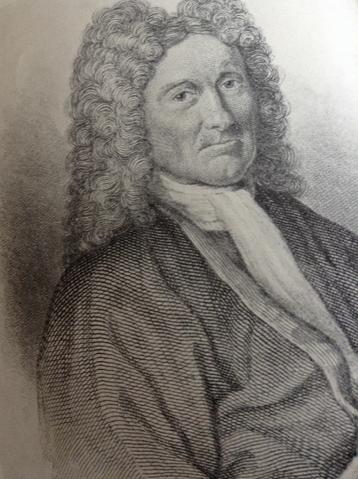
Zona de identificação
Tipo de entidade
Forma autorizada do nome
Forma(s) paralela(s) de nome
- Sir Robert Sibbald
Formas normalizadas do nome de acordo com outras regras
Outra(s) forma(s) de nome
identificadores para entidades coletivas
Área de descrição
Datas de existência
Histórico
Born Edinburgh 1641; died Edinburgh 1722
Robert Sibbald was educated in Cupar, at Edinburgh High School, and at the university there when he was awarded an MA in 1659. From 1660 to 1661 he studied anatomy and surgery and botany and chemistry at Leiden before moving to Paris and then Angers where he graduated MD in 1661. Returning to Edinburgh to practise as a doctor he was appalled at the state of medicine in the city and initially established a private garden to cultivate medicinal herbs. In 1670, with his friend and distant cousin Andrew Balfour, he leased a small plot belonging to Holyroodhouse at St. Anne’s Yards to assemble a collection of between 800 and 900 plants. This, together with a second (physic) garden at the Trinity Hospital acquired 6 years later, became a major site for plants of use in material medica and a teaching resource for medical students. Sibbald was a joint founder of a medical virtuoso club which in 1681 became the Royal College of Physicians of Edinburgh. He was knighted in 1682, appointed physician in ordinary to Charles II and made geographer royal for Scotland. In 1684 he produced a ‘Pharmacopeia Edinburgensis’ and the following year he became the first professor of medicine at Edinburgh University. However hostility to his conversion to Catholicism (which he later renounced) meant he had to flee temporarily to London. On his return to Edinburgh he developed a deepening interest in natural history, geography and antiquarianism and from 1682 became involved in compiling information from a range of sources on the geography and natural history of Scotland, resulting in the publication of ‘Scotia Illustrata’ in 1684, with a second edition in 1696. Drawing on his various interests, Sibbald contributed to early Enlightenment discourses on the economic potential of the nation. As a physician he explored the efficacy of botanical cures by extracted from Scottish plant life and his botanical work was admired by Linnaeus who named the genus Sibbaldia in his honour.
Sources: Dictionary of National Biography; HR Fletcher and WH Brown ‘The Royal Botanic Garden Edinburgh 1670-1970’; Deni Bown, ‘4 Gardens in One’; (R. Desmond ‘Dictionary of British and Irish Botanists and Horticulturalists).
D.W.
Locais
Estado Legal
Funções, ocupações e atividades
Physician and geographer
Mandatos/fontes de autoridade
Estruturas internas/genealogia
Contexto geral
Área de relacionamentos
Área de pontos de acesso
Pontos de acesso - Assuntos
Pontos de acesso - Locais
Ocupações
Zona do controlo
Identificador de autoridade arquivística de documentos
Suportado por
Identificador da instituição
Regras ou convenções utilizadas
Estatuto
Nível de detalhe
Datas de criação, revisão ou eliminação
Revised 16/03/2023 by Leonie Paterson